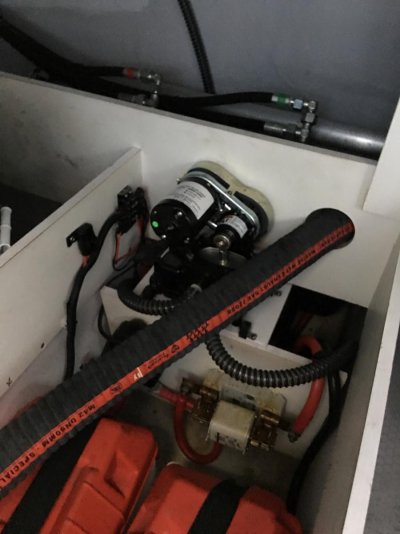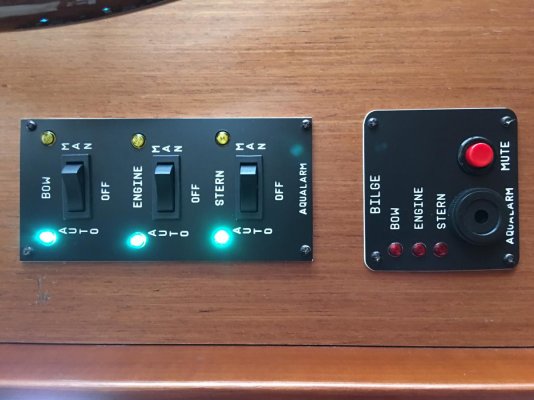When I had an insurance survey done on my ST42, they dinged me for not having an "automatic" fire suppression system and required that I have the system inspected.
We called in a company to inspect (and tag) the extinguishers and they refused to tag the extinguishers installed. They gave us a quote of $8,000 to install a new system (monitors over each engine, alarm panel, new Halotron non-powder extinguishers, engine/blower shutoffs). I thought they were just trying to sell me a new system, so waited and had another company check it.
I got pretty much the same answer. They did remove, weight and inspect the bottles, and tagged them. But said that they were tagging them as "handhelds", not as a "fire suppression system". They also confirmed for me that there is a fusible link on mine so that if they got sufficient heat, it would deploy on their own.
Seems Beneteau installs BC Powder extinguishers which are:
a) too small for the engine room given that the engines and blowers are running and will pull the stuff into the engine and out of the engine compartment
b) according to the fire extinguisher guy, diesel engines are required to have a shutdown switch to turn the engine off before the extinguisher deploys.
c) if only one goes off there is not enough agent in it to have much effect (if you pull them, pull both!)
d) if they do go off, the caustic dry powder will pretty much trash the engines (better than burning I guess).
e) the pull cables get stiff and corroded. (when they had the bottles disconnected they pulled the cables on my boat, and it took a LOT of force the first few times until they loosed up. I'd probably have given up on a manual deployment attempt.)
For the short term (recovering from the purchase) I have installed smoke/fire detectors that are networked (
Kiddie RF-SM-DC, I put one in the engine room, one in each berth, one in the salon (over the electrical panel), one down in the lazarette, and one up on the flybridge under the bench seat so that I can hear if they go off.
They work pretty well, as my engine room detector was right over the starboard turbocharger/exhaust and it detected a small exhaust leak. It would go off anytime I went from higher RPM to slower rapidly (coming down off plane to avoid waking someone).
Longer term, I'm looking at having a Fireboy system installed. I'd hoped that Beneteau fixed this issue with the new ST44's but I guess not. Bummer!


